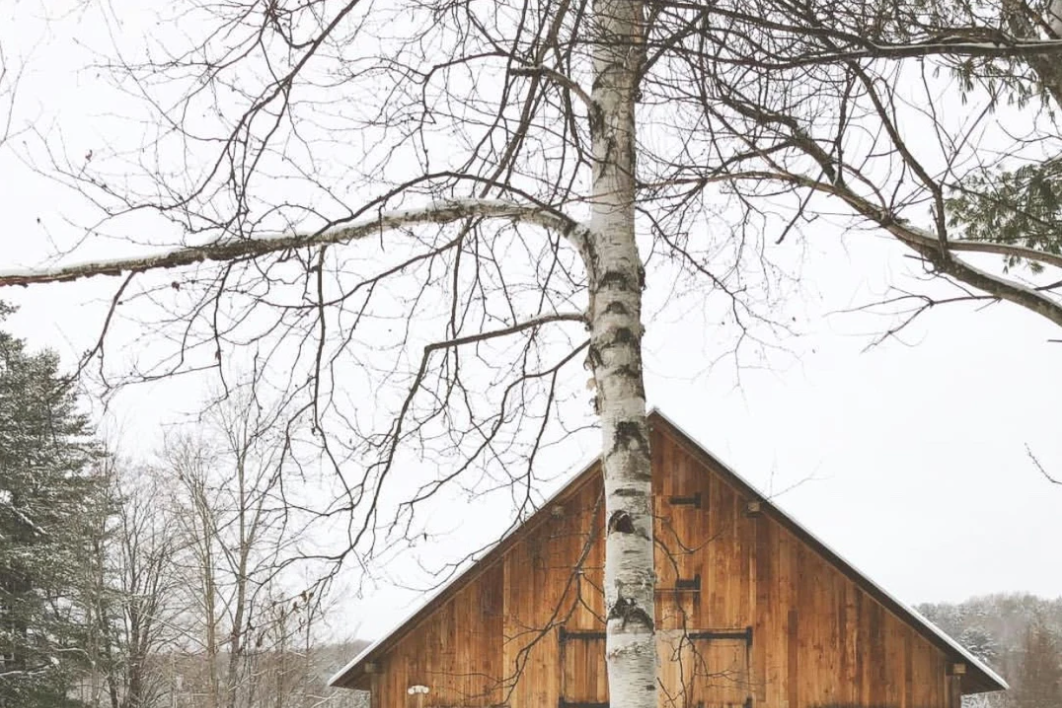In the heat of July I think fondly, and often about January bluebird days such as this. July is unrelenting for a farmer. The weeds and grass grow at a nearly unsustainable, breathless rate. They don’t allow for reflection, or planning, or yoga, or reading. They are devoted entirely to manual and endless labor. Every hour of the sunlit day is used and consumed by the greedy July farm.
By contrast January’s farm is filled with time. The days are short but complete with the mental and physical work that was forgotten in July. I spend these January days in a devoted ritual of yoga and reading. I dedicate this time to furthering my farm-education, to the newest literature on farming. This week a book on silvopasture, last week one on carbon sequestration. I have the brain space and time to stretch both mind and body.
The wildlife -what hasn’t migrated south or to lower elevations- moves closer-in towards the farmhouse. Our dogs are more often found by the wood stove at this time of year and so the wildlife is emboldened by their absence and desperate in their hunger. We see deer digging for apples in the far, wild trees across the brook. In a couple months time, at melt they will be joined by the family of black bears on that hill. The barred owl as taken to roosting in the trees above the piggery. The black-capped chickadees and the mourning doves are two of the few birds that brave our Vermont winter and beg for food at our empty feeders. The wild rabbits are smart enough to keep to the shadows of our surrounding forest, but their tracks found in the morning bely their audacity. The red squirrels are everywhere taunting our fat house-cats and stealing what food was put out for the birds.
 |
 |
 |
 |
A livestock farm is never truly hibernating. The animals are stoic, resigned and accustomed to the hay in place of grass, the barnyard in place of pasture, the snow in place of sun. Farm work at this time of year is reduced to the perfunctory. Quickly, efficiently keeping the animals fed, and dry, and watered as quickly as the sub-zero temperatures can allow. Always here, ideas are generated to make next winter easier on both farmer and beast. The chickens -in need of better natural light in their dark coop- will have their roof replaced next year; swapping corrugated tin for corrugated plastic. Resulting -hopefully- in more eggs laid. The horses will need a permanent winter pasture, so as to give them better exercise than their current runs afford. The pigs need additional huts and a better system for frost-free water, a system we have yet to invent. The cows are perfect, we dialed in their winter experience years ago.
While winter in Vermont is long -nearly half the year by some anecdotal estimates- January is the only month where one can afford to be so idle and contemplative. Come February the earth starts to warm up and plans for sugaring are made, taps are planned, buckets cleaned. My husband starts logging next year’s firewood while the ground is still frozen but the snow not as deep. I turn towards the attic and the high tunnel beginning the tiny sprouts of next year’s garden. Spreadsheets are made, argued over, and rewritten for the coming season’s pasture and garden and forest plans. Already we’ve forgotten the physical exhaustion of summer and so well rested from our winter slumber, we greedily look forward to it’s arrival.




